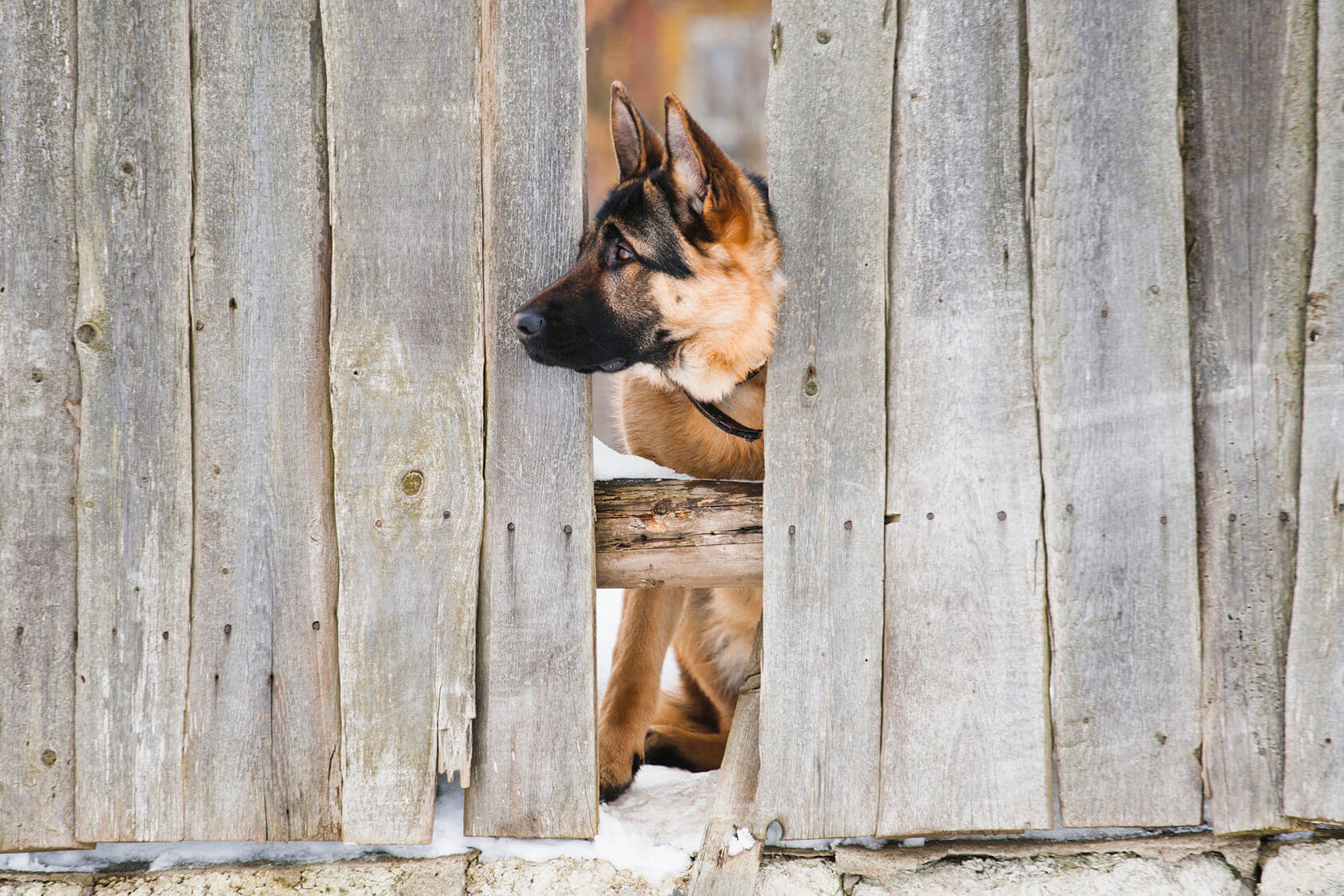Types Of Dog Fences
 September 28, 2016
September 28, 2016
Are you having problems with your dog escaping or wanting to build a dog proof fence? In today’s article we take a look at DIY dog fencing ideas to keep your dog safely contained.
Firstly, when we think about dogs attempting to escape we need to understand the reasons why. Escaping, like digging, excessive barking, jumping and destructive tendencies can all be linked to boredom and lack of exercise. So once you have escape-proofed your yard, it’s important to consider the following, otherwise your clever dog may take up another behaviour to replace his Houdini predispositions.
- Adequate exercise – Different breeds will require more or less exercise. Flexing the muscles also flexes the mind. A well-exercised dog is a happy, well-adjusted pet who is less likely to suffer behavioural problems.
- Dog Training – Dogs thrive on training. They simply adore learning new things. If you are getting bored with your level of training, consider a dog sport.
- Time – This is probably the big one, how much time are you spending with your pet? Most behavioural problems begin when your pet is bored and not getting the attention and time that they need.
- De-sexing – Is your pet neutered? A dog can smell a bitch on heat up to two football fields away. Removing the immense desire to breed can help to radically reduce how eager they are to escape. Females are no different!
Types of Dog Fences
It doesn’t need to cost you the earth and with a little creativity you can build a dog fence that is escape proof. There are plenty of designs on offer and all you need is a small budget and some time (and in some cases a mountain of patience, especially if you have a large backyard).
- Roll Bar Dog Fence – The most impressive fence is certainly the dog roll bar fence; where you use two pieces of poly pipe to create a rolling bar on the top of your fence. The idea is when your dog jumps on the fence, the bar will roll causing your dog to slip off. The main problems with this type of fence is that you have to keep it oiled so that the roll works efficiently.
- Dig Proof Dog Fence – If your dog is digging under the fence, consider pouring a concrete border around the fence line. This can then be easily hidden with plants and soil. It’s a bit of work, but it’s super effective. You can also try bordering the fence-line with large stones, as they will topple and fill the holes when your dog is digging.
- Lean Dog fence or angled Dog fence extension – This is also an easy DIY job. Fix brackets at around a 45-degree angle (towards the inside of your dog fence) on the top of your existing fence. Then fix chain fencing to these brackets. This will add a little cover for your dog fence; so that when your dog jumps their head will hit the cover and they will not be able to jump over.
- Electric signal invisible Dog fencing – These dog fences are good, but require training. How do they work? An invisible wire is placed underground and marked with flags (as a visual barrier for your dog). You then train your dog to teach them what the flags mean. When your dog gets too close to the flag they will receive an audio warning (normally a beep) if they continue they receive a small static zap to the dog collar to correct them. These types of fences are banned in NT, Qld, Tas, Vic, WA. However, they are legal in the ACT, NSW (containment fences only), and SA.
Tips
When considering your dog fencing problems, remember how your dog jumps the fence and the reasons why. If it’s because they can see another dog or movement, think about using bamboo or other materials to make the fence solid. Another solution is to build a safe dog pen, or a large kennel area with a roof. Supervision is important when we are dealing with dogs that like to escape. However, it’s not always possible 24/7. Keeping up with your exercise, boredom busters, entertainment and dog fence-proofing will help you combat this problem.
